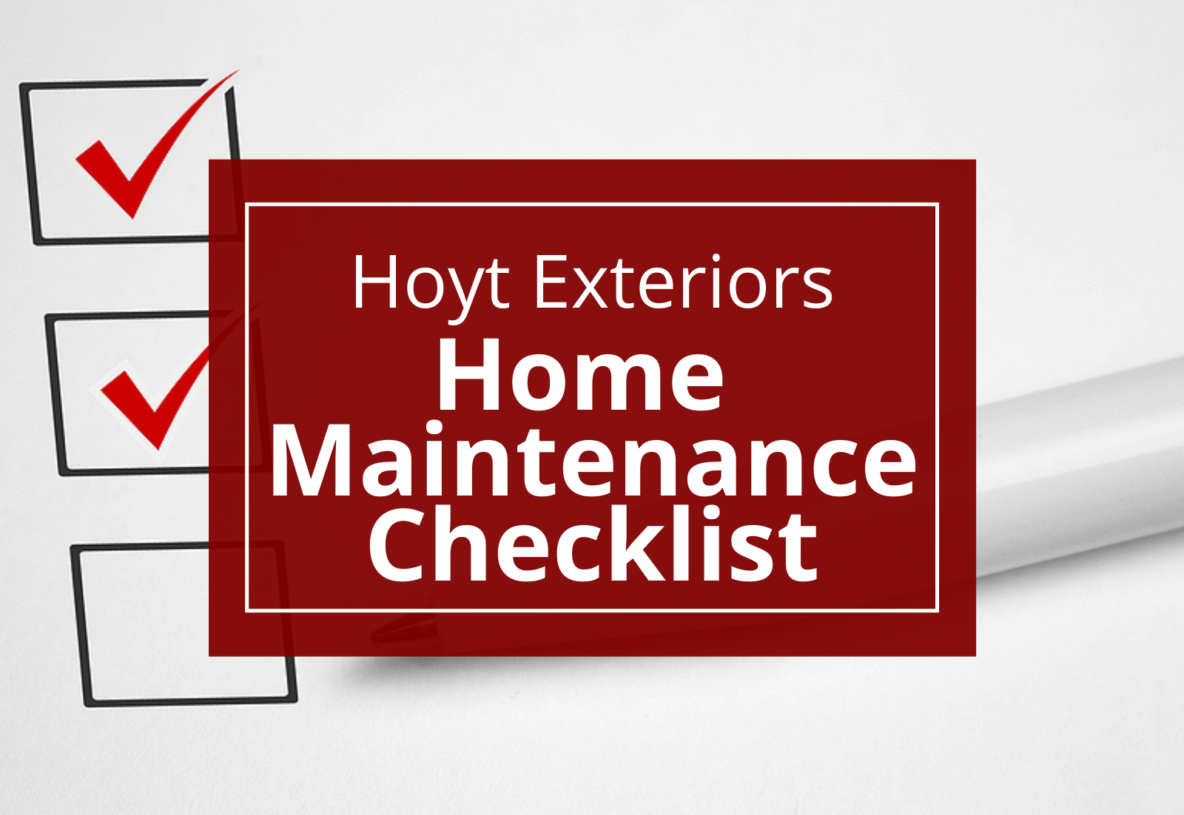Keeping up with home maintenance can feel like an overwhelming task, even for the most seasoned homeowner. There’s a seemingly never-ending list of maintenance items to take care of each season, and if you don’t stay on top of things, your list of deferred tasks will only grow longer by the week.
One way to make home maintenance more manageable is to follow a yearly maintenance schedule. To help you stay on top of things, we put together this seasonal checklist of year-round home maintenance tasks.
Print out this list and hang it somewhere you can review it regularly (like the inside of a cupboard door), and give yourself the satisfaction of checking each item off as you go.
Spring Home Maintenance
Early Spring:
- Change your HVAC filter to remove dust buildup, improve your home’s temperature regulation, and help lower your energy bills. (This should be done every 90 days.)
- Change the batteries in your smoke detectors and carbon monoxide detectors. This should be done once a year, and spring is a great time to do it. Tip: Change your batteries on daylight savings (the second Sunday in March) every year—it’s an easy date to remember and will help you get in the habit.
- Test your sump pump to ensure it works properly.
- Rake dead leaves and grass to prepare your lawn for new growth. (But wait to do this until all the ground has thawed and your lawn starts to turn green.)
- Add mulch to your garden beds so weeds don’t grow up among your perennials.
- Turn on outdoor faucets.
- Hire a tree service to trim trees that sustained damage over the winter and remove leaning trees before they fall on electrical wires, telephone lines, or structures on your property.
- Have your roof inspected for signs of broken or missing shingles or other wear and tear.
- Clean out gutters so you’re ready for spring rains and summer thunderstorms.
Late Spring:
- Aerate and reseed your lawn so it can grow thick and lush over the summer.
- Plant perennials and cold-hearty vegetables.
- Have your AC compressor serviced by a professional so you’re ready for the hot summer days to come.
- Store your snowblower and tune up your lawnmower.
Summer Home Maintenance
- Change your HVAC filter.
- Plant annuals and the rest of your vegetables. Water plants regularly.
- Set your lawnmower blade to a high setting to protect your grass from drought.
- Watch for summer storm damage to your home, and file a claim with your homeowners insurance promptly if damage occurs.
- Tackle exterior home repairs and projects. These might include replacing broken deck boards, laying walkway pavers, landscaping, scraping and repainting your home, replacing windows, replacing your roof, and so on.
- Wash your windows and clean your home’s exterior.
- Clean your patio or deck. Restain your deck, if needed.
Fall Home Maintenance
- Change your HVAC filter.
- Clean out your gutters to help prevent ice dams this winter.
- Have your HVAC system cleaned and serviced by a professional. A clean system is more efficient! Plus, the last thing you need is for your system to go down during frigid winter weather.
- Install storm windows.
- Replace worn weatherstripping around doors.
- Recaulk around windows if the current caulk has pulled away. This will help minimize heat loss on cold winter days.
- Have ductwork and vents cleaned by a professional.
- Hire a professional to clean your fireplace or woodstove and your chimney in preparation for the wood burning months. A chimney with a thick layer of creosote can be a catalyst for a chimney fire.
- Replenish your firewood stash if you plan to burn wood this winter.
- Plant bulbs and perennials.
- Rake leaves, gather sticks, and clean up your yard before the snow falls.
- Remove AC window units and store them for the winter.
- Service your snowblower so you’re ready for the first winter storm!
- Shut off and drain outdoor faucets to keep pipes from freezing.
- Make a plan for winter indoor projects.
Winter Home Maintenance
- Change your HVAC filter.
- Keep your sidewalk and driveway clear of snow and ice. If you have pets, choose a pet-safe salt for your driveway and walkways.
- Watch for ice dam formation (icicles are one indicator to look for). Read our latest article on ice dam prevention, management, and elimination to learn more.
- Keep an eye out for condensation on the inside of windows. Condensation means leaky, inefficient windows and may warrant a window replacement in the spring.
- Take precautions to keep your pipes from freezing. This includes insulating pipes on exterior walls (if you’re able to) and keeping your thermostat set to a steady temperature even when you’re out of town.
- If you have a generator, test it to make sure it runs properly. Have fresh gasoline on hand just in case.
- Stock up on emergency food and household supplies (for pets too!) in case of a severe storm or power outage.
Year-round home maintenance doesn’t have to be stressful. A checklist like this can help you stay on top of indoor and outdoor home maintenance tasks without feeling overwhelmed, so you can relax and enjoy your well-kept home.
Hoyt Exteriors is your trusted Twin Cities source for roofing, siding, windows, decking, and more! Contact us to learn more about our services and how we can help you keep your home in top condition all year long.

